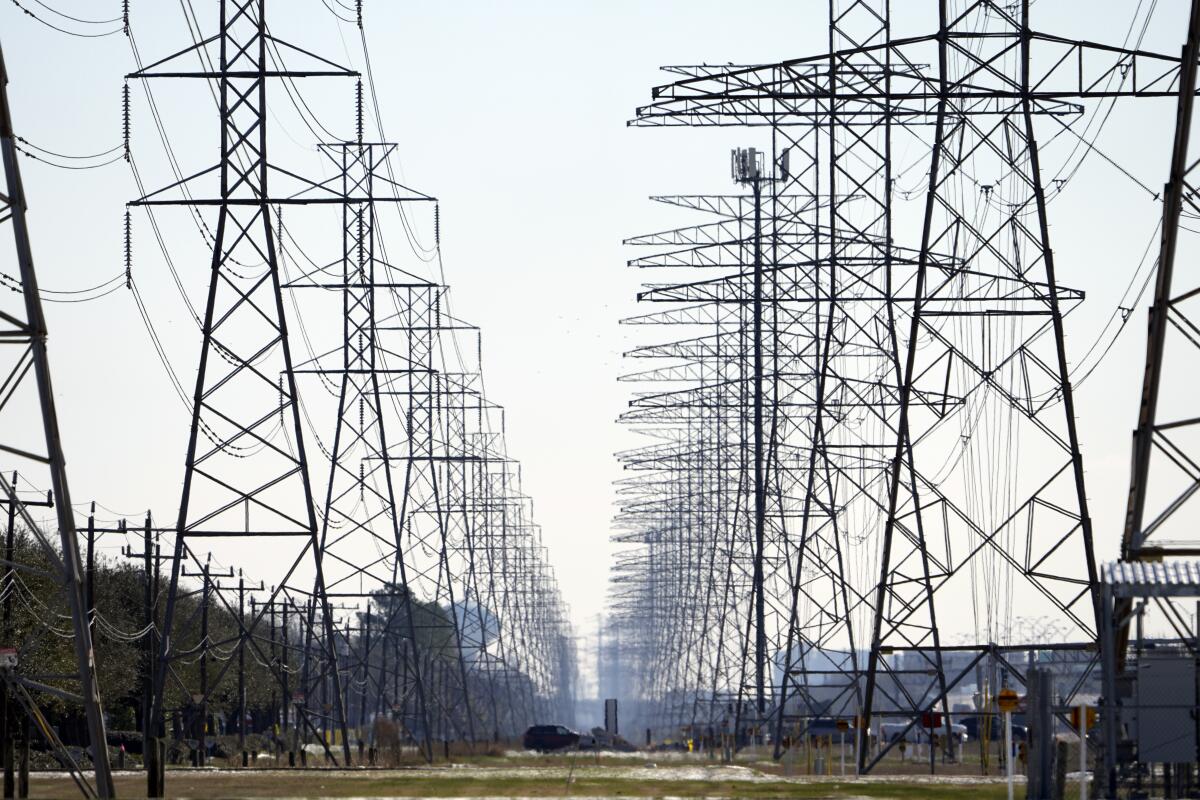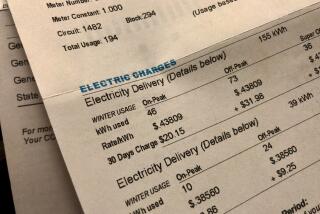Editorial: Don’t mess with freezing Texas, California. You have your own power problems

When a record-breaking “heat storm” in August forced California’s electrical grid operator to cut power to millions of people over the course of two miserable days, lawmakers in Texas had a field day mocking their Democrat-dominated rival for failing to keep the lights on when it got a little hot.
See, they chortled, this is what the liberal tree-hugging rush to renewable energy gets you. Of course, the cause of the rolling blackouts was much more complicated than an overreliance on renewables, though that was certainly a factor. You can’t undergo a major shift in power generation without some stumbles.
Now Texans are in a similar, albeit much more serious, situation with more than 4 million homes and businesses left without power for days during the coldest weather in a century. And Californians may be inclined to feel a bit smug. How are those fossil fuels working out for you now? After all, fewer people were in the dark in California last summer, and those blackouts lasted a few hours at most, not four days and counting.
But the reality is that neither state can claim bragging rights about the reliability of its electrical grid. As much as Californians and Texans like to tout their vast political differences, when it comes to providing power to their people they are both failing — and for many of the same reasons.
The two states have very different energy goals and approaches. California is on the path toward getting 100% of its power from the sun, wind or other renewable energy sources by 2045. Texas unapologetically embraces fossil fuels, even though it is a leader in wind-produced energy.
But the fundamentals of their power grids are similar. Both states deregulated their grids two decades ago, though to different degrees, and put them under control of independent agencies that enjoy little public oversight. Both states participate in competitive energy markets that move power around in ways that are not always in the public’s best interest. Both have failed to require their utilities to properly prepare for the stresses of extreme weather. Both lack facilities to store surplus power — solar in California and natural gas in Texas.
And both ignored warnings that blackouts were imminent without action.
Texas even had a preview of how this week’s breakdown might unfold. In 2011, another arctic front descended on Texas and neighboring states. Low temperatures caused power equipment to freeze, forcing plants to shut down and Texans to endure rolling blackouts. After this, federal regulators made a series of recommendations to avoid a repeat, such as weatherizing plants and insulating pipelines. If those recommendations had been followed, the grid’s problems this week may have been less severe.
California’s electrical grid operator also had fair warning of how the August heat wave could overwhelm its systems. In fact, it had warned lawmakers about that exact scenario a year earlier.
Initially, some Texas lawmakers tried to pin this week’s outage on frozen wind turbines, once again demonizing green energy. Some turbines did freeze, though only because they lacked the heating devices that more prepared states employ for just these conditions. But it was the state’s natural-gas plants and pipelines, frozen or offline for other reasons, that were the biggest contributor to the state’s power failure.
The irony here is that the heart of the system that failed Texas — burning fossil fuels for energy — is a major contributor to the climate changes that helped send the state into an unusually deep freeze.
There are some disagreements among climate scientists, but a prime theory is that warmer temperatures in the Arctic are reducing the size of the ice cap, which fluctuates from winter to summer. Less ice means more solar energy absorbed by the Arctic Ocean and warmer water and air temperatures, a cycle that has affected the path of the jet stream, making it more erratic and, in the winter, steering frigid Arctic air southward — the “polar vortex.”
And there’s one final similarity. Each state’s ratepayers will foot the bill for these structural failures, paying in both misery and money. During the heat wave last year, energy prices in California skyrocketed to $1,000 per megawatt-hour. At one point Monday, prices in Texas spiked to $9,000 per megawatt-hour.
If there is a silver lining to the Texas and California power failures, it is that they alerted the public to the inherent problems of their respective electrical grids. They should hold their elected officials’ feet to the fire to fix those problems before the next “once-in-a-lifetime” extreme weather event throws them, powerless, into the dark.
More to Read
A cure for the common opinion
Get thought-provoking perspectives with our weekly newsletter.
You may occasionally receive promotional content from the Los Angeles Times.










